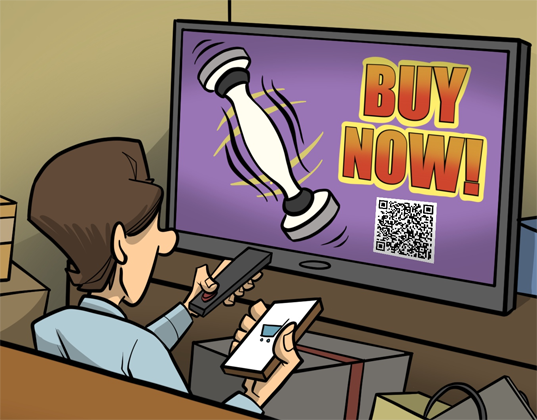 For brand marketers looking to make an out-sized impression on customers, video walls can provide an immense visual platform for creating memorable experiences. Adding interactivity to a video wall has the power to multiply this impact, transforming the impressive-but-familiar experience of viewing a huge screen into a rare and engaging event, facilitating a deeper conversation and understanding between brand and customer.
For brand marketers looking to make an out-sized impression on customers, video walls can provide an immense visual platform for creating memorable experiences. Adding interactivity to a video wall has the power to multiply this impact, transforming the impressive-but-familiar experience of viewing a huge screen into a rare and engaging event, facilitating a deeper conversation and understanding between brand and customer.
However, the technological challenges of properly executing large-scale video wall projects—while not particularly difficult to overcome when simply displaying visual content—are greatly increased when interactivity components are introduced. Considerations must be made to choose the right hardware, design a user experience that’s received as intended, and select the correct interaction model to match the project. And while it’s fair to say that interactive screens aren’t wholly unexplored territory—we all carry small versions in our pockets in the form of the smartphones—the larger scale and attributes of interactive video walls present specific issues that need to be addressed.
Here’s a four-step guide to navigating the most critical issues as you consider your own interactive video wall experience:
- Select your interaction model with the user experience in mind.
The first decision to make when crafting your interactive experience is considering how exactly it will be used. There are several use cases to choose from: a single customer controlling the interface while others watch, multiple users interacting with the video wall all at once, or a scenario where a presenter drives and curates the experience.
Even within interaction models that allow multiple users to engage simultaneously, it’s important to consider the audience standing at a distance behind these users. Those near to the screen and able to touch it will have a point-blank view, while others further away will see more at once. To optimize your video wall’s impact, both of these groups need an experience designed with their perspectives in mind. This means ensuring that interactive elements displayed on the wall make sense—and look great—from all likely viewpoints.
Usability is also an essential consideration. Interactions with the video wall must be so intuitive that any customer can approach it, understand what to do, and come away with a positive brand experience. At the same time, interactions performed by presenters require this same simplicity, so that experiences can be driven without difficulty or hiccups.
- Big is beautiful—but unique screens sizes can really stand out.
To make a grand impression with your video wall, making it huge certainly doesn’t hurt. However, a powerful approach is to use a screen ratio that customers aren’t used to seeing. No matter how big it is, any 16:9 screen is seen as a TV, and viewers can get that experience at home. But show customers a vertical wall shaped like a skyscraper, or an extra-wide screen with the dimensions of an actual wall, and they’ll perceive it as something special.
Before committing to a particular wall size, it’s critical to first ensure that the quality and resolution of any graphical assets to be displayed on the wall—and the A/V technology used to display them—are a good match for each other. Everything shown on the wall will be expanded in size and viewed from extremely close up—images of insufficient quality will not look good. At the same time, the touch technology for each wall is so specialized that it usually needs to be custom-made. It’s far better to work within the limitations that these factors present (and achieve a high quality product) than to end up with a bigger screen than your graphics and technology can realistically handle.
- Consider gesture controls as an alternative to touch.
Thanks to the ubiquity of smartphones and tablets, the public has an intuitive understanding of touch screen interfaces, making touch controls a natural choice for your interactive video wall. (And touch controls are always the right solution where very fine interactions are required.)
However, gesture controls—offered by Microsoft Kinect, Leap Motion, and other technologies—provide unique advantages that ought to be considered. For example, utilizing gesture controls allows the user to interact with the wall from a distance, potentially solving issues associated with being too close to see the whole screen, or obstructing the views of others.
- Content is king.
Ultimately, the success of your interactive video wall depends most on the content you use it to deliver.
Beyond using the highest resolution assets possible, there are a few tricks you can use to help your content look its best. One technique is to avoid displaying content across the entire screen if a smaller size looks better. Another is to keep key content and interactive elements away from any bezels on your wall (the seam lines where multiple screens have been joined to make a single big one). Finally, motion graphics can be used to enhance content where quality might be an issue, making that content appear more compelling than it might if viewers got a good look at it standing still.
By taking care in selecting the most appropriate and advantageous interaction model, screen technology, controls and content, your interactive video wall can deliver a powerful wow-factor that captures customers’ attentions – and give them a new and lasting appreciation for your brand.
Fabio Matsui is CTO at Wire Stone, a digital marketing agency part of Accenture Interactive.
Related Articles:
Explainer Videos Boost Tylenol Sales At Walgreens
How to Crush Your Digital Content Experiences
Clorox Says Clean is an “Idea” in New Short Films

 Network
Network

